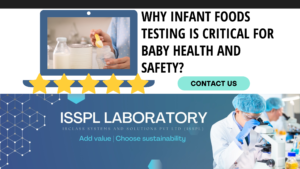An Overview by Team ISSPL - Analytical Testing Laboratory in India
ToggleLeak Detection and Repair, or LDAR, is an industrially-approved process. The globally-accepted techniques help in identifying the leaking areas in an equipment piece and repairing it. It is an integral process to minimize emissions. Regulatory bodies, like the Environmental Protection Agency or EPA, make these norms mandatory and indispensable. Thus, it is a necessity for the manufacturers to adhere to the existing LDAR guidelines. Do you think it is better to wait till the leak happens? Maybe not. A proactive approach will ease the needs. Understand that an LDAR program is not an exclusive set of guidelines that you necessitate for regulatory compliance. In the long run, it can also save and help manufacturers from wasting their resources. Read on and obtain an overall idea about the critical aspects related to Leak Detection and Repair. Understand better and ease the needs of setting up an LDAR program in a facility center.
The need to be proactive – Why should you follow this approach?
Leaks could be accidental, but one must maintain a proactive approach. It could be a heft decision for the resources if you do not conduct the leak test beforehand. It wastes effort and resources in the long run. One needs to review the industrial necessities and follow the ideal practices for repair and testing. A thorough LDAR testing will help you find the issues with the setup. At the same time, it gets easy to repair the problems. Thus, it resolves more than one issue. You can find an apt solution for both without putting in extra effort.
Regulations related to LDAR
The regulations defined by the industry-specific regulatory bodies help the manufacturers. How? You get well-defined norms related to various Leak Detection and Repair rules for manufacturers.
For instance, the Standards of Performance for Crude Oil and Natural Gas Facilities for which Construction, Modification, or Reconstruction defines the issues related to leak and repair via the 40 CFR rule. The law covers various aspects including –
- The survey frequency
- The range of facilities essential to follow the LDAR regulations
- The essential resources and LDAR training sessions
- LDAR maintenance regulations and norms
- End-to-end reporting, data storage, and documentation
Leak Detection and Repair offer the best ways to minimize volatile organic compounds or VOCs. In fact, it helps the environment by reducing the flow rate of hazardous air pollutants or HAPs. One can detect VOC leaks with new-age testing instruments like –
- Vapor analyzers
- Sound and smell detectors
- Visual inspections
One can find modern testing equipment pieces like a vapor analyzer to detect a leak accurately. The leaks need to be detected and checked to understand whether it ranges above a specified EPA-regulatory threshold. It is critical to avoid the chances of violation. Local agencies and industrial bodies may define the features of a leak distinctly. Thus, the leak threshold can differ based on regulations. It is better to develop an efficient Leak Detection and Repair program and adhere to the stringent regulatory requirements.
The purpose and importance of LDAR
The purpose of Leak Detection and Repair is straightforward. The industrially-approved leak testing program provides an accurate verification report for the manufacturers. It exhibits that a manufactured product is appropriate without leaks and it meets the predetermined specifications. It is a necessary part as it helps the system operate as per expectation. The testing process is crucial to ensuring optimal product quality and safety. Additionally, a robust and efficient leak testing process assists in reducing product warranty claims and resource wastage. Manufacturers can conveniently manage the cost of quality for systems with the testing programs.
Apart from cost-effectiveness, the production rate can amplify with the LDAR program. How? It increases the efficiency and appropriateness of the products. A leak test validates and boosts the supplier component quality. It also verifies that the operators have developed an optimal system component without inaccuracies. Simply put, the purpose is to improve production efficiency, reduce the efforts of rework and eliminate product scrap waste.
Connection and leak – The link
Do you know what matters the most during a leak test? The elementary aspect of any leak test is the reliability factor. A consistent and leak-tight connection that seals all ports and holes is necessary. Regardless of the type of leak test program, the requirement of finding a leak-tight and reliable connection is indispensable. In many cases, the connection gets overlooked while a manufacturer develops the specific leak test process. The purpose of any leak test is to detect and isolate the component or system for testing. If the components remain associated with the rest of the setup, the report accuracy for the test ports may get compromised. Ensure an error-free setup of holes, seals, and leak-tight connections.
Benefits of LDAR – At a glance
- It offers a non-destructive solution – The modern Leak detection equipment pieces are not destructive. It reviews the leaking scopes and does not cause any damage.
- It offers accurate reports – The best-in-class leak detection equipment pieces are accurate and efficient. It accurately pinpoints the leak without fail.
- It saves time and resources – One can find efficient processing and instant solutions for the LDAR program with top-notch testing labs.
- It can reduce the risks – The hazards of leakage are extensive for various industries. From petrochemical outlets to leakage of airborne components at the factories – the risks can vary at large. The leak detection program can review and prevent the hazards in the long run.
- Essential for the environment – Apart from the benefits enjoyed by the workers and operators at a facility, the testing report helps the environment. It reduces the chances of leakage of pollutants and hazardous components. Thus, one can avoid the possibility of long-term exposure to toxic pollutants. One can avoid health hazards and environmental impacts with the LDAR program and facilities.
Ensure accurate testing and reporting.
With IRCLASS Systems and Solutions Pvt Ltd (ISSPL) laboratory facilities, ensure a hassle-free testing solution for more than one facility unites and products. The extensive testing programs are apt for different industries. Get efficient solutions with optimally analyzed reports.







